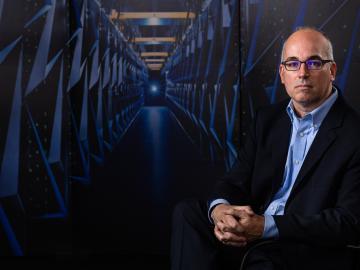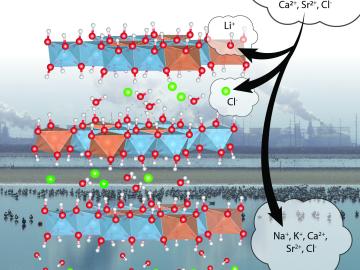
Filter News
Area of Research
- Advanced Manufacturing (1)
- Biology and Environment (29)
- Clean Energy (38)
- Computational Biology (1)
- Fusion and Fission (11)
- Fusion Energy (2)
- Isotopes (10)
- Materials (22)
- Materials for Computing (5)
- National Security (7)
- Neutron Science (12)
- Nuclear Science and Technology (12)
- Quantum information Science (4)
- Supercomputing (28)
News Type
News Topics
- 3-D Printing/Advanced Manufacturing (15)
- Advanced Reactors (5)
- Artificial Intelligence (9)
- Big Data (7)
- Bioenergy (15)
- Biology (16)
- Biomedical (16)
- Biotechnology (4)
- Buildings (2)
- Chemical Sciences (4)
- Clean Water (5)
- Climate Change (3)
- Computer Science (33)
- Coronavirus (13)
- Cybersecurity (3)
- Decarbonization (3)
- Energy Storage (12)
- Environment (29)
- Exascale Computing (4)
- Frontier (1)
- Fusion (10)
- Grid (4)
- High-Performance Computing (10)
- Isotopes (9)
- ITER (1)
- Machine Learning (2)
- Materials (4)
- Materials Science (17)
- Mathematics (2)
- Mercury (4)
- Microscopy (6)
- Nanotechnology (6)
- National Security (4)
- Neutron Science (15)
- Nuclear Energy (21)
- Physics (10)
- Polymers (2)
- Quantum Computing (1)
- Quantum Science (10)
- Security (4)
- Space Exploration (2)
- Summit (11)
- Sustainable Energy (11)
- Transformational Challenge Reactor (3)
- Transportation (11)
Media Contacts

We have a data problem. Humanity is now generating more data than it can handle; more sensors, smartphones, and devices of all types are coming online every day and contributing to the ever-growing global dataset.

Each year, approximately 6 billion gallons of fuel are wasted as vehicles wait at stop lights or sit in dense traffic with engines idling, according to US Department of Energy estimates.

As a reactor physics nuclear engineer, Ben Betzler leverages and develops computational methods to solve questions across nuclear energy—whether it’s finding the best design of a reactor core or repurposing an old tool for a new analysis.

As the second-leading cause of death in the United States, cancer is a public health crisis that afflicts nearly one in two people during their lifetime.

Peter Wang is focused on robotics and automation at the Department of Energy’s Manufacturing Demonstration Facility at ORNL, working on high-profile projects such as the MedUSA, a large-scale hybrid additive manufacturing machine.

After several years in the private sector exploring the unknown origins of neurodegenerative brain disorders such as Alzheimer’s, Chris Ellis thinks one of the keys to solving the mystery is at Oak Ridge National Laboratory: the world’s most powerful supercomputer.

The formation of lithium dendrites is still a mystery, but materials engineers study the conditions that enable dendrites and how to stop them.

A team from the ORNL has conducted a series of experiments to gain a better understanding of quantum mechanics and pursue advances in quantum networking and quantum computing, which could lead to practical applications in cybersecurity and other areas.

Liam Collins was drawn to study physics to understand “hidden things” and honed his expertise in microscopy so that he could bring them to light.

In the quest for domestic sources of lithium to meet growing demand for battery production, scientists at ORNL are advancing a sorbent that can be used to more efficiently recover the material from brine wastes at geothermal power plants.


